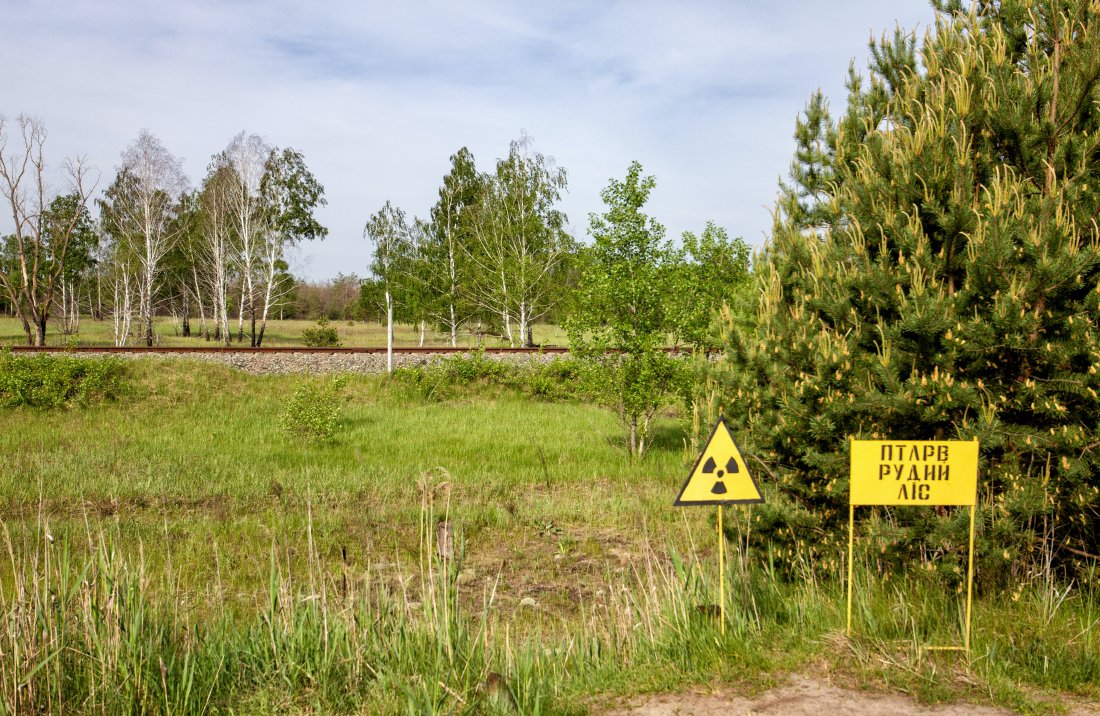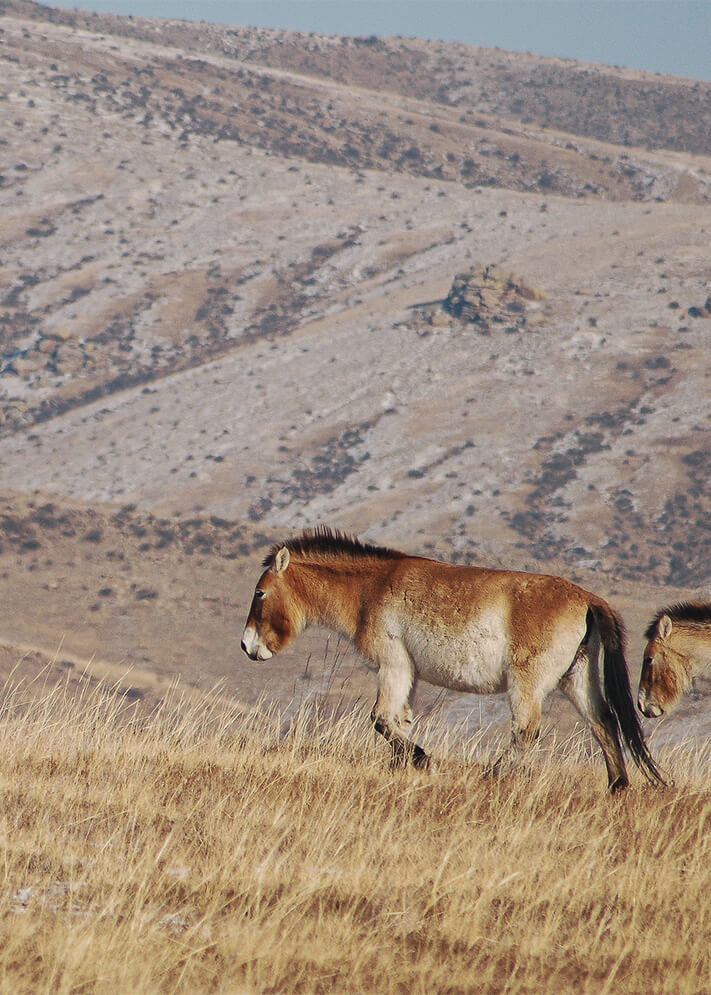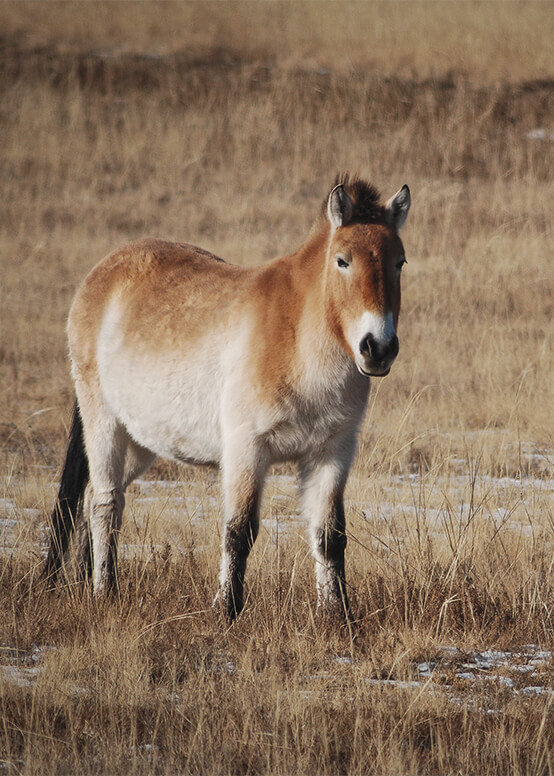
In the years following the 1986 disaster, Chernobyl became a dead zone. The 1,017 square miles around the plant had been evacuated, and with the exception of the remaining power plant workers and a few that refused to leave their homes, the area was devoid of humans. It wasn’t safe to be there and it was unknown what the long term effects of the disaster would be.
Immediately following the disaster, nature suffered. Trees and plants near the reactor died. Animals were killed, or became sick or deformed. There was an increase in birth defects. Food chains were disrupted, leading to the decline of many species.
But a few years later, nature begin to return. Birds and insects, being small and mobile, were the first to appear. Over time, more and more animals came into the area. As the buildings crumpled and decayed, bears, wolves and deer all moved in. It had become a unintentional nature preserve, the third largest in Europe.
In 1998, new species moved in – a group of Przewalski horses.
The Przewalski Horse
The Przewalski horse is considered the last wild breed of horses in the world. They were once widespread throughout the steppes of Central Asia. They were discovered by a Russian explorer in 1879 named Nikolai Przhevaslsky. He was surprised to find these horses, so unlike any other horses he had seen before. They were smaller and stockier than domestic horses, and they had a distinctive tufted mane.
He brought back some of the horses to Europe and they were soon introduced to zoos and other captive breeding programs. Some of these horses have been the foundation of breeding programs that still exist today.
For those considering the Przewalski as a riding horse, their numbers are so rare, it’s pretty unlikely to find one to begin with. But they are not considered the same species of horse, they are their own species, with 66 chromosomes instead of the domesticated horse’s 64. They truly are wild horses, although recent studies have determined they are a more feral form of the first horses domesticated by the Botai people in northern Kazakhstan 5,5000 years ago. They are considered difficult to handle, more likely to kick or bite, are more skittish and less willing to cooperate. This is not a breed of horse for the average rider – they require specialized handling.

The Askania Nova Nature Preserve
In 1899, Friedrich Falz-Fein brought Przewalski horses from Mongolia to his nature preserve in Ukraine, the Askania Nova Nature Preserve. Although their number had been declining, the Przewalski horses were still relatively common at the time, and it wasn’t hard to find them in the wild. They thrived at the preserve, and their population grew.
Falz-Fein was a conservationist who was interested in preserving the species. His capture of the species was timely, as their numbers in the wild continued to drop. Habitat loss, hunting and competition from non-native horses on the land all contributed to their decline.
The last wild Przewalski horse in Mongolia was seen in 1969, and the species is considered an endangered. Falz-Fein’s planning helped in saving the species from almost total extinction. The reserve became a major center for the conservation of the species and helped to provide horses for reintroduction programs in other parts of the world.
One of those programs was the Chernobyl Exclusion Zone.

The Introduction of the Horses
In 1998, 31 Przewalski horses were brought to the Chernobyl exclusion zone, ten males, 18 females, and an additional 3 males from a local zoo. It was thought that since the now extinct Tarpan horse once lived in this area, it was possible that the Przewalski horses could possibly live there as well.
The population increased to 65 in five years, but poaching brought it back down, and in 2007, there were just 50 horses in the zone. But after the poaching was stopped, the population recovered. In a census carried out in 2018, there were 150 horses in the zone. They had divided into several herds, mare groups with foals, stallion groups, and a few lone individuals. Some of the horses moved northward to Belarus.
Despite typically being associated with the open plains of the Steppe, the horses have adapted to the environment. They use the forest frequently, including the famous “red forest,” one of the most radioactive areas on the planet. There is enough vegetation and water to sustain them. They have been observed using the structures left behind by humans for shelter, even spending hours relaxing in them. Despite the seemingly hostile and dangerous landscape, the horses are thriving.
As the population continues to increase, the introduction of the horses to this area has been declared a success. The implications of this experiment have proven that it is possible to reintroduce endangered species into the wild, and that Chernobyl is not as uninhabitable as once thought. It could lead the way for other endangered species to be reintroduced into what has turned into the most unlikely of nature preserves. One possible thought is to introduce the European Bison to the zone, an animal currently listed as “Near Threatened” on the IUCN Red List of Threatened Species.
The animals and plants in the zone have adapted to the circumstances and continue to take back the land. As time goes on, it will be interesting to observe what nature does without human interference.
Unfortunately the animals now face an uncertain future due to human threat – it’s impossible to predict what effect the war will have on the animals that are currently in the zone and in the Askania Nature Nova Preserve. For many reasons, from the conservation of this species to the very real effects on the humans involved, we just hope there’s an end to it soon.
